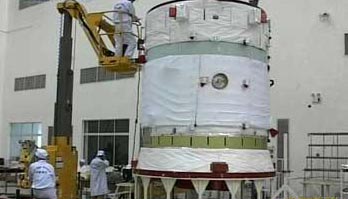 |
|
To make China's very first spacewalk possible, a large number of technological innovations are necessary.
|
Pan Teng, Deputy Chief Designer of Spaceship System, said, "This is to see whether a human being is able to adapt to the environment in space. The walk will provide lots of information in terms of the impact on the astronaut in space. The astronauts will also conduct scientific experiments."
Inside the module are many handles and rungs. These make it easier for the astronauts to move around.
Three astronauts will take part in the Shenzhou 7 mission, one more than the mission for Shenzhou 6. They will stay in space for at least three days. That means the equipments in the living module have to be installed in a more reasonable way to spare more space for the astronauts working inside the module, and for enough food and water to be used at least five days.
Opening and closing the module's hatch in space can be a problem, considering it has to be done in total vacuum, under extreme temperature variations, with zero gravity. If the hatch is not closed properly, catastrophe can result.
Pan Teng, Deputy Chief Designer of Spaceship System, said, "The hatch opening and closing have been tested many times in a simulated space environment, under high and low temperatures as well as low pressure. Now we've accumulated extensive data on the hatch's performance in space."
To ensure their safety, officials in charge of the program have come up with no less than 4 emergency procedures and 30 contingency plans, which cover just about every aspect of the spacewalk.
(CCTV September 26, 2008)